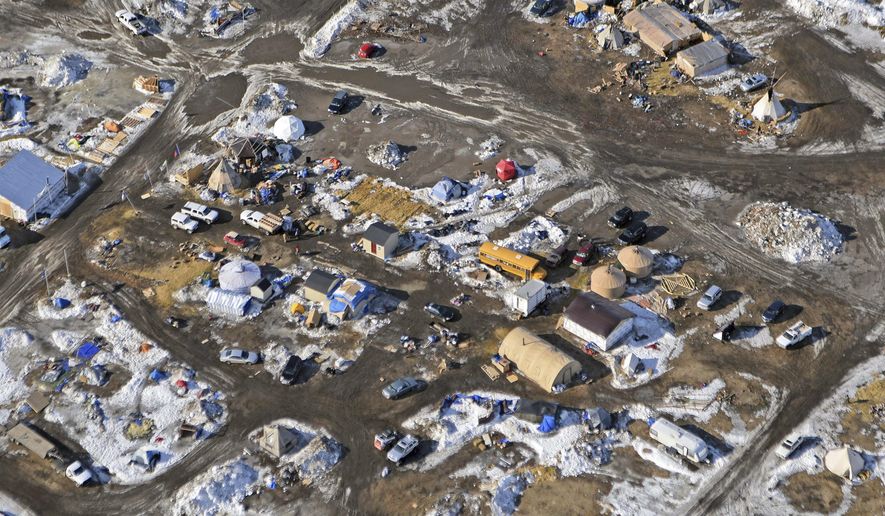North Dakota Gov. Doug Burgum issued late Wednesday an emergency evacuation order for Dakota Access protesters still located in the floodplain, citing the threat of “injury or death” and “ecological disaster” from the rapidly melting snowpack.
The mandatory evacuation sets a deadline of 2 p.m. Wednesday, Feb. 22, the same cut-off established by the U.S. Army Corps of Engineers for pipeline activists to leave the camp located on federal land at the confluence of the Cannonball and Missouri rivers.
The snowmelt has been accelerated by warmer-than-normal temperatures in southern North Dakota, leaving parts of the large Oceti Sakowin camp already under several inches of water.
“Due to these conditions, the governor’s emergency order addresses safety concerns to human life as anyone in the floodplain is at risk for possible injury or death,” said the governor’s office in a statement. “The order also addresses the need to protect the Missouri River from the waste that will flow into the Cannonball River and Lake Oahe if the camp is not cleared and the cleanup expedited.”
The corps has joined the clean-up effort led by the Standing Rock Sioux at the camp, which was left strewn with an estimated 4.5 million pounds of garbage and debris after most protesters vacated the area during the early December snowstorms.
Tow trucks are working to remove about 200 vehicles still located in the floodplain before they can be washed into the river system, Western Wire reported.
SEE ALSO: Dakota Access pipeline executive compares lawless protesters to terrorists
“The Oceti Sakowin camp needs to be evacuated no later than Feb. 22 in order to allow private contractors to accelerate the removal of waste from the camp,” said the governor’s statement.
Hundreds and sometimes thousands of Dakota Access pipeline protesters have camped out at the site since August in an effort to stop the 1,172-mile, four-state project from gaining a federal easement on a 1,100-foot stretch under Lake Oahe.
Standing Rock Sioux chairman Dave Archambault II has also urged protesters to leave the floodplain even as the tribe continues to challenge the pipeline in court.
The corps granted the easement last week after first granting it in July, then delaying and ultimately pulling its approval in December in order to respond to concerns raised by the tribe about the project’s impact on water quality.
Energy Transfer Partners has insisted that the pipeline, which would run alongside an existing natural-gas pipeline at Lake Oahe, is safe, noting that the company and corps rerouted the project 140 times to address concerns about its impact on historic relics, sacred places and the environment.
• Valerie Richardson can be reached at vrichardson@washingtontimes.com.




Please read our comment policy before commenting.